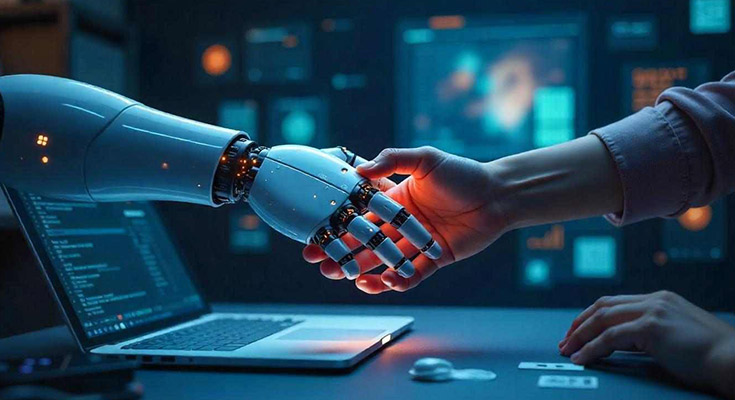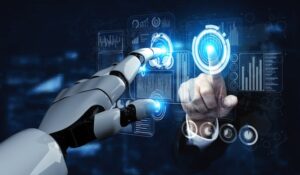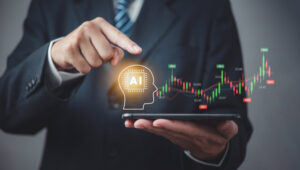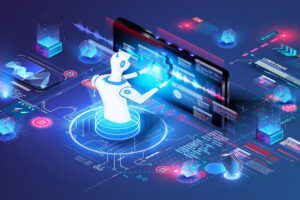
Introduction
The world of graphic design has undergone a significant transformation with the advent of Artificial Intelligence (AI). As technology evolves, the debate between AI vs. human graphic design becomes increasingly prominent. This article delves into this fascinating subject, exploring the strengths and challenges of both AI and human designers.
In recent years, AI has made remarkable strides in various fields, including graphic design. From creating logos to generating entire visual content, AI tools are redefining the way we think about design. However, the question remains: Can AI truly replace the creativity and intuition of a human designer? In this article, we will explore the dynamics of AI vs. human graphic design and what it means for the future of design.
The Rise of AI in Graphic Design
Understanding AI’s Role
AI technology has become an integral part of the graphic design industry, offering tools that enhance productivity and streamline processes. AI algorithms can analyze vast amounts of data, learn patterns, and create designs that are aesthetically pleasing. This has led to the development of various AI tools that designers now use to enhance their work.
AI’s Advantages in Design
One of the key advantages of AI in graphic design is its ability to generate designs quickly. AI can automate repetitive tasks, allowing designers to focus on more complex and creative aspects of a project. Additionally, AI can provide data-driven insights, enabling designers to make informed decisions about color palettes, layouts, and typography.
The Human Touch in Graphic Design
Creativity and Intuition
While AI offers efficiency and speed, the human touch in graphic design brings creativity and intuition to the table. Human designers can tap into emotions, cultural nuances, and personal experiences to create designs that resonate with audiences on a deeper level. This ability to connect with people is something that AI still struggles to replicate.
Emotional Connection
Design is not just about aesthetics; it’s about storytelling and creating an emotional connection with the audience. Human designers excel in this aspect, as they can understand and interpret the needs and desires of their clients. This is particularly important in branding, where the goal is to establish a strong and memorable brand identity.
Comparing AI and Human Designers
Strengths of AI Designers
AI designers are excellent at producing a large volume of designs quickly. They can also experiment with different styles and variations, offering clients a wide range of options. Furthermore, AI can learn from previous designs, improving its output over time.
Strengths of Human Designers
On the other hand, human designers bring a unique perspective and creativity that AI cannot replicate. They can infuse designs with personality and originality, making them stand out in a crowded marketplace. Human designers are also more adaptable, able to respond to changes and feedback in real-time.
Challenges Faced by AI and Human Designers
AI’s Limitations
Despite its advantages, AI has limitations. It lacks the ability to understand context and emotions fully, which can result in designs that feel generic or impersonal. AI also relies heavily on data, which means it can struggle with projects that require out-of-the-box thinking.
Human Limitations
Human designers, while creative, may face challenges related to time constraints and workload. Unlike AI, they cannot work around the clock, and their output may be limited by their personal capacity. Additionally, humans are prone to biases, which can impact the design process.
The Future of Graphic Design
AI and Human Collaboration
The future of graphic design lies in the collaboration between AI and human designers. By combining the efficiency of AI with the creativity of humans, designers can achieve the best of both worlds. AI can handle repetitive tasks, while humans focus on the creative aspects that require emotional intelligence and storytelling.
Emerging Trends
As AI continues to evolve, we can expect to see more sophisticated AI tools that enhance the capabilities of human designers. These tools will not only increase productivity but also enable designers to explore new creative possibilities. For more insights on emerging trends, check out this article on content packs.
AI vs. Human Graphic Design in Practice
Case Studies
Several companies have successfully integrated AI into their design processes. For instance, some firms use AI to generate initial design concepts, which are then refined by human designers. This approach allows for a more efficient workflow while maintaining the creative integrity of the project.
Real-World Applications
In the real world, AI and human designers often work together to create impactful designs. From advertising to web design, this collaboration results in innovative and effective visual content. To see how AI can streamline your design process, explore the tools available for therapists and coaches.
Conclusion
The debate between AI vs. human graphic design is not about choosing one over the other but rather finding a balance that leverages the strengths of both. As technology continues to advance, the collaboration between AI and human designers will become increasingly important in shaping the future of graphic design. By embracing this synergy, designers can create more meaningful and impactful work.

FAQ
What are the main advantages of AI in graphic design?
AI offers speed, efficiency, and data-driven insights, making it an excellent tool for handling repetitive tasks and generating design variations.
Can AI replace human designers?
While AI can assist with certain aspects of design, it cannot fully replace the creativity and emotional intelligence of human designers.
How can AI and human designers collaborate effectively?
By using AI for automated tasks and allowing human designers to focus on creativity and storytelling, both can work together to produce exceptional designs.







